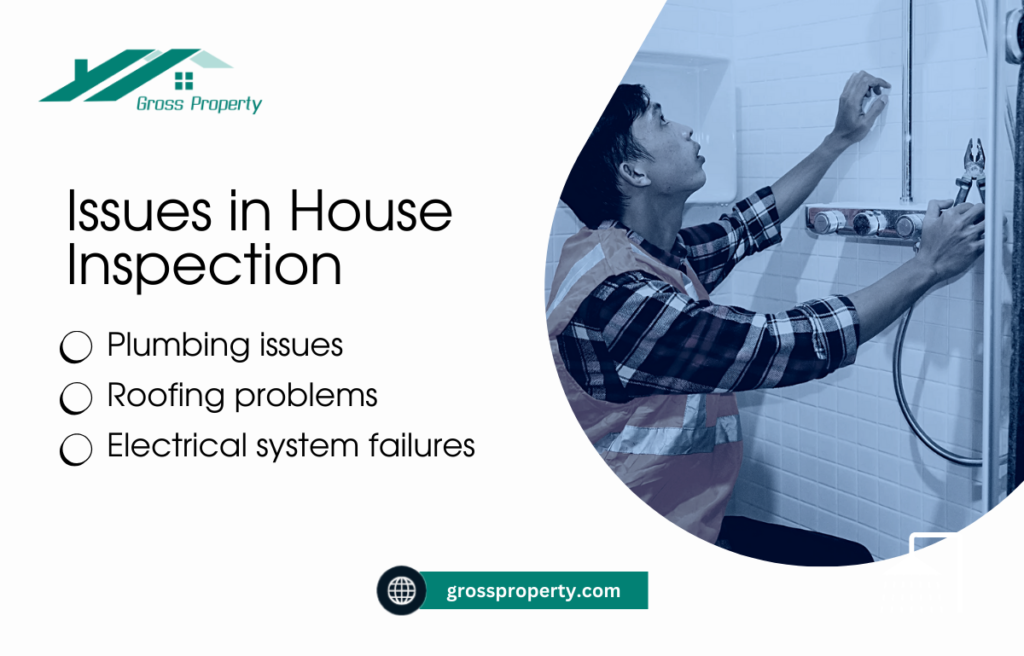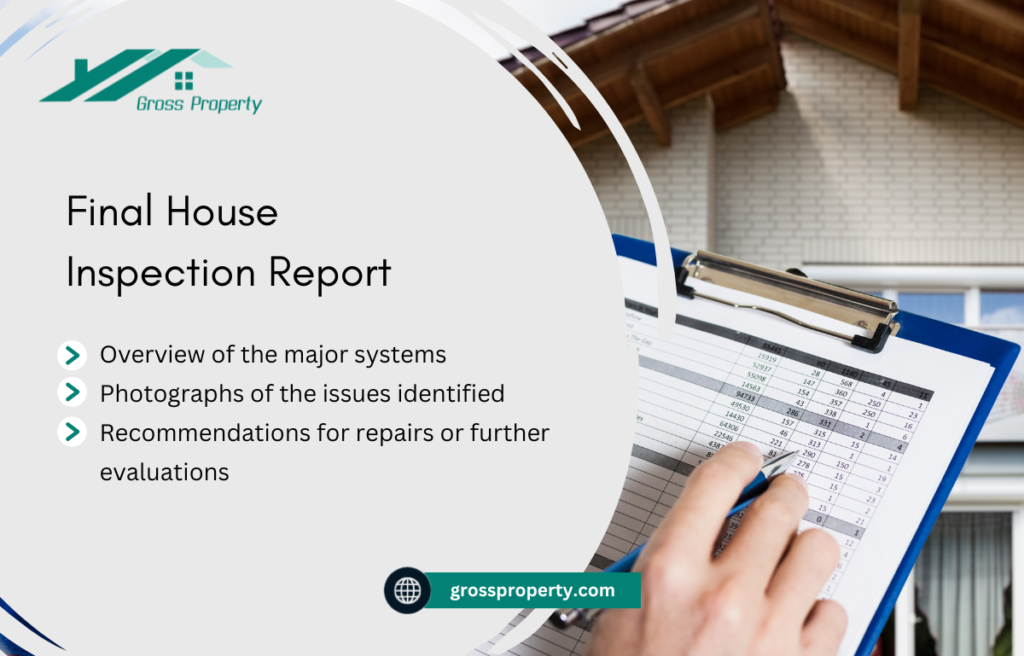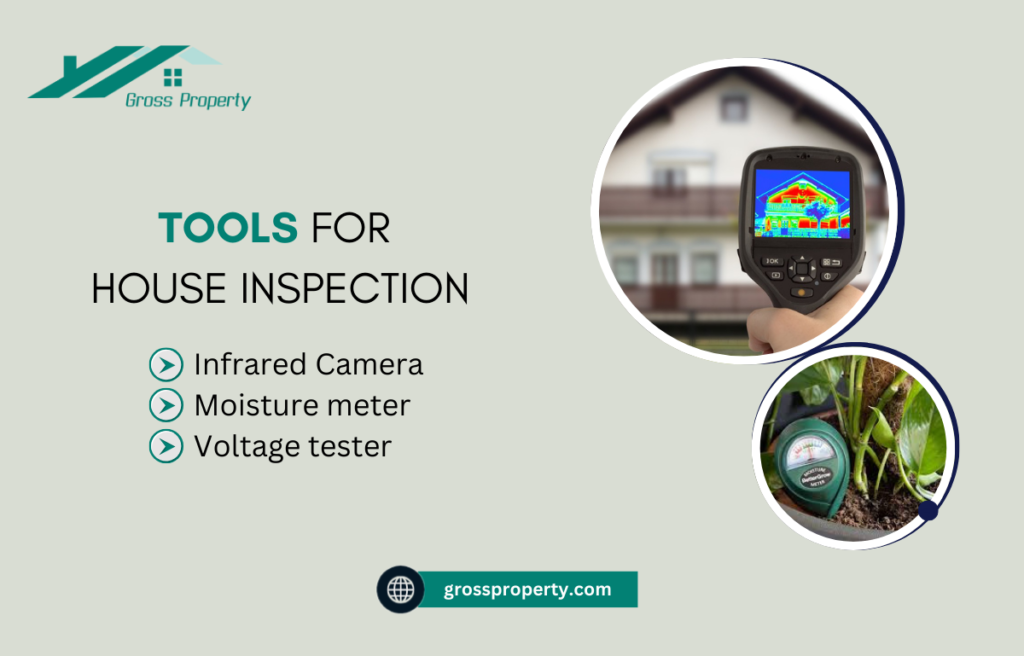Buying a house is one of the most significant investments you’ll ever make, and ensuring that your potential new home is in the best possible condition is crucial. A thorough house inspection not only helps identify hidden issues but also provides peace of mind before signing on the dotted line. Whether you’re a first-time homebuyer or an experienced property investor, knowing what to look for in a house inspection can save you from costly repairs in the future. This guide will provide essential tips to navigate the inspection process, highlighting common issues and offering expert advice to make sure your new home is a safe and sound investment.
What is the Importance of a House Inspection Before Buying?
A house inspection is a critical step in the home buying process because it helps uncover potential problems that may not be visible during a routine walk-through. A thorough inspection can reveal structural issues, safety hazards, or other costly repairs that could impact the value or livability of the property. By addressing these concerns upfront, buyers can make informed decisions, either by negotiating the price, requesting repairs, or walking away from the deal if the issues are too significant.
Additionally, house inspections provide buyers with a deeper understanding of the property’s overall condition, including the longevity of major systems such as roofing, plumbing, and electrical. This ensures that buyers are not surprised by unexpected repair costs shortly after moving in. In essence, a house inspection is a safeguard against unforeseen financial burdens and protects the buyer’s investment.
Skipping a home inspection could lead to purchasing a property with underlying problems, some of which might not become apparent until it’s too late. For example, a minor roof leak might seem harmless, but over time it could lead to water damage, mold, and structural weakening, resulting in thousands of dollars in repairs. Thus, the importance of a house inspection before buying cannot be overstated.
How Should I Prepare My Home for an Inspection?
Preparing your home for an inspection can improve the overall experience and ensure that the inspector can thoroughly assess every part of the property. One of the first steps is to clean and declutter the home. Clear access to critical areas such as the attic, basement, water heater, and electrical panels is essential. This makes it easier for the inspector to perform a comprehensive evaluation of all components and systems in the house without hindrance.
In addition to cleaning, homeowners should address minor repairs before the inspection. For instance, fix leaky faucets, replace burnt-out light bulbs, and ensure that all smoke detectors are functioning properly. These small details can leave a positive impression on the inspector and help prevent any unnecessary red flags in the report. It’s also beneficial to replace air filters, check for any signs of pest infestations, and make sure doors and windows open and close smoothly.
Finally, it’s important to prepare all necessary documentation for the inspector. Gather paperwork for any major repairs or renovations, including roofing, HVAC installations, or electrical work. This helps provide context for any upgrades or issues that may arise during the house inspection, giving the inspector a complete understanding of the property’s history and maintenance.
What Are the Most Common Issues Found During a House Inspection?
House inspection often uncovers several common issues that can affect the value and safety of a home. Roofing problems are frequently reported, with inspectors identifying leaks, missing shingles, or signs of wear and tear. These issues, if not addressed, can lead to significant water damage, mold growth, and structural weakening over time.
Electrical system failures are another common finding, especially in older homes where wiring may not meet modern safety standards. Inspectors often detect outdated or faulty wiring, insufficient grounding, or overloaded circuits, all of which pose serious fire hazards. Ensuring the home’s electrical systems are up to code is vital for the safety of its occupants.
Additionally, plumbing issues such as leaks, corroded pipes, or inadequate water pressure are typical findings during inspections. These issues can lead to water damage, mold growth, and costly repairs if not resolved. Other common concerns include poor insulation, foundation cracks, and HVAC system inefficiencies, all of which can negatively impact a home’s energy efficiency and long-term value. Addressing these issues early can save buyers from substantial future expenses.

What Electrical Issues Should a House Inspection Cover?
Electrical issues are a significant concern in any house inspection, as they directly affect the safety and functionality of the home. One of the primary areas an inspector will evaluate is the circuit breaker panel. Inspectors check for outdated or overloaded systems, as these can lead to fire hazards or frequent electrical failures. If the panel is undersized for the home’s electrical needs, it may need upgrading to handle modern appliances and systems safely.
Another critical area to inspect is the wiring throughout the home. Homes with older wiring, such as knob-and-tube or aluminum wiring, are more prone to electrical fires and may not meet current safety standards. Inspectors will look for exposed wires, improper connections, or any signs of wear and tear that could pose a risk. Faulty wiring, improper grounding, and overloaded circuits are common issues that require immediate attention.
Lastly, the inspection will cover outlets and switches. The inspector will test each to ensure proper grounding and functioning. GFCI (Ground Fault Circuit Interrupter) outlets, which prevent electrical shocks in moisture-prone areas like kitchens and bathrooms, should be present and operational. Missing or malfunctioning GFCI outlets are a red flag and must be addressed to enhance the electrical safety of the home.
How to Check Plumbing Systems in a House Inspection?
Inspecting a home’s plumbing system is essential to uncover hidden issues that could lead to water damage, leaks, or inefficiencies. During a house inspection, the inspector will first evaluate the water pressure by turning on faucets and showers throughout the home. Inconsistent pressure or sputtering water could indicate problems with the pipes, such as blockages, corrosion, or leaks. Inspectors will also check for signs of water hammer, which occurs when the flow of water is suddenly forced to stop, creating noise and potential pipe damage.
The inspector will then assess the drainage systems. Slow drains or backups can be a sign of clogged or damaged pipes, which could require professional cleaning or repair. Special attention is given to visible pipes, especially under sinks, in basements, and in crawl spaces, where leaks or signs of corrosion are commonly found. It’s also important to verify that the home’s water heater is in good working condition, with no signs of rust, leakage, or outdated components.
Another area of focus is the sewage and waste system. Inspectors will check for proper sewage connections and inspect the septic system (if applicable) for signs of malfunction. Any strange odors or visible seepage from the septic tank area could indicate that the system is failing and needs immediate attention. Ensuring the plumbing system is free from leaks, corrosion, or inefficient drainage is crucial to avoid costly repairs in the future.
What Are the Signs of Poor Ventilation and Moisture Damage?
Poor ventilation and moisture damage are common yet serious issues that can compromise a home’s structural integrity and lead to health problems. One of the first signs of poor ventilation is excessive condensation on windows or walls. This typically occurs in bathrooms, kitchens, and basements where moisture is prevalent. Condensation can lead to mold growth, which poses health risks and can cause long-term damage to walls, ceilings, and floors if not addressed.
Another sign to look for is musty odors, which often indicate the presence of mold or mildew. Damp, stale air is a telltale symptom of poor ventilation, and it usually points to moisture being trapped inside the home. In addition to mold, poorly ventilated areas can suffer from wood rot, especially in places like the attic or basement, where airflow is often restricted.
Inspectors also check for visible signs of moisture damage, such as water stains on ceilings or walls, peeling paint, or warped floors. These issues may be caused by roof leaks, plumbing failures, or inadequate ventilation in high-moisture areas. Addressing ventilation issues early can prevent further damage and improve indoor air quality, creating a healthier living environment.
What Should Be Included in an HVAC System Inspection?
A house inspection must cover the Heating, Ventilation, and Air Conditioning (HVAC) system, as it plays a crucial role in maintaining indoor comfort and air quality. One of the first components to inspect is the furnace or air handler. The inspector will evaluate whether the system is functioning properly and check for signs of wear, such as rust, strange noises, or leaks. It’s important to verify that the system’s filters have been regularly replaced, as dirty filters can reduce efficiency and lead to indoor air quality issues.
Another critical area of the HVAC system is the ductwork. The inspector will check for any signs of leaks, disconnected ducts, or blockages that could impact airflow. Poorly sealed or damaged ducts can reduce the system’s efficiency, leading to higher energy bills and inconsistent temperature control throughout the home. The inspector may also use a thermometer to ensure that the HVAC system is producing air at the correct temperature and efficiently distributing it across all rooms.
Lastly, the thermostat and controls should be inspected to ensure that they function properly and can accurately regulate the home’s temperature. If the HVAC system is outdated or malfunctioning, the inspector may recommend repairs or replacement. A well-maintained HVAC system ensures that the home remains energy-efficient and comfortable for the occupants, especially during extreme weather conditions.
What Areas of a House Should Be Prioritized During Inspection?
During a house inspection, several key areas should be prioritized to ensure the property is in good condition and safe for occupants. The roof is one of the most critical components to inspect, as it protects the home from weather damage. Inspectors will check for leaks, missing shingles, or signs of wear that could indicate the need for repairs or replacement. Addressing roofing issues promptly can prevent costly water damage and structural problems down the road.
The foundation and structure of the home are also top priorities. Inspectors will look for cracks, settling, or water intrusion, which can signal serious underlying issues. Foundation problems, if left untreated, can lead to significant structural damage, affecting the stability of the entire house. Homebuyers should always ensure the foundation is stable and free from visible defects.
Electrical and plumbing systems should also be given significant attention. Inspectors will verify that the electrical wiring is up to code and that there are no fire hazards. Similarly, they will check the plumbing for leaks, water pressure issues, and corrosion. These systems are vital for a home’s safety and functionality, making them critical areas of focus during the inspection.
How Can I Identify Structural Problems in a House?
Identifying structural problems in a house requires careful observation of both the interior and exterior for signs of damage or instability. One of the most common indicators of structural issues is foundation cracks. While small hairline cracks are normal in many homes, large, widening cracks or those that appear in a stair-step pattern may suggest more serious problems. These cracks often point to settling or shifting of the foundation, which can compromise the integrity of the home.
Another key area to examine is uneven flooring. If the floors feel sloped, bouncy, or uneven when you walk across them, it could be a sign of underlying structural damage. This may result from shifting soil beneath the foundation or weakened support beams. Doors and windows that don’t close properly or appear misaligned may also indicate structural shifts, particularly if these issues are found throughout multiple areas of the house.
Water damage is another telltale sign of structural problems, particularly in basements or crawl spaces. Stains on walls, standing water, or excessive moisture can weaken the foundation and cause materials to rot, leading to significant long-term damage. Identifying these issues early, either through a professional house inspection or careful self-assessment, is crucial to prevent costly repairs and maintain the safety of the home.
What Are Red Flags in a Home’s Foundation You Shouldn’t Ignore?
A home’s foundation is its most critical structural element, and any significant issues here can lead to costly repairs or safety hazards. One of the biggest red flags is large or widening cracks in the foundation. While small, hairline cracks are often due to normal settling, cracks that are larger than 1/4 inch wide or that form a stair-step pattern on brick or concrete walls may signal a serious problem, such as foundation shifting or sinking. These cracks often indicate instability that can worsen over time, impacting the entire structure of the home.
Another concerning sign is doors and windows that don’t close properly. If you notice that doors or windows are sticking, misaligned, or difficult to operate, this may be due to foundation movement, causing the frame to shift out of alignment. This problem could extend to cracks in the drywall or uneven flooring, which also suggest underlying foundation issues.
Additionally, water intrusion in basements or crawl spaces can be a major red flag. Standing water, moisture, or mold in these areas often indicates poor drainage or foundation cracks that allow water to seep in. Water damage can weaken the foundation over time, leading to costly repairs and potential health hazards due to mold growth. It’s important to address these foundation problems early to prevent further structural damage.
How to Inspect Roofing for Leaks and Damage in a Home?
Inspecting a roof for leaks and damage is a critical part of the house inspection process, as the roof protects the entire structure from weather elements. Start by visually inspecting the roof from the ground, looking for missing, cracked, or curling shingles. These signs of wear often indicate that the roof has been exposed to the elements for an extended period and may need repairs or replacement. Pay close attention to areas around chimneys, skylights, and vents, as these are common spots where water can seep in.
Next, check for signs of water damage or leaks inside the house. Stains on the ceilings, walls, or attic are common indicators that the roof has been compromised. If possible, inspect the attic during or immediately after a rainstorm, as active leaks will be more apparent. The presence of mold or mildew in the attic may also suggest poor ventilation or a long-standing leak.
Additionally, a thorough house inspection should include an assessment of the roof’s flashing—the metal pieces that seal areas where the roof intersects with chimneys or walls. Damaged or missing flashing can lead to water infiltration. Ensuring the roof’s integrity helps avoid extensive damage to the home’s structure and prevents costly repairs in the future.
How to Spot Potential Pest Infestations During a House Inspection?
Identifying potential pest infestations is a key component of a thorough house inspection, as pests can cause extensive damage to a property. One of the first signs to look for is droppings or nesting materials in hidden areas like basements, attics, or behind appliances. These indicate the presence of rodents or insects. Pay close attention to small piles of wood shavings, which could be a sign of termites or carpenter ants.
Another common indicator of pests is chewed or damaged wiring, insulation, or wood. Rodents often chew on these materials, leaving behind frayed wires or holes in walls and floors. Inspectors will also look for holes or gaps around windows, doors, and the foundation, as these are common entry points for pests. Sealing these gaps is critical for preventing future infestations.
In addition to physical signs, check for unusual smells, such as musty or ammonia-like odors, which can be caused by rodents or their waste. Be sure to inspect outdoor areas for burrow holes or termite mud tubes along the foundation or in crawl spaces. Spotting and addressing these signs early can prevent pests from causing significant structural damage and protect the home’s integrity.
What is Included in a Final House Inspection Report?
A final house inspection report is a comprehensive document that details the inspector’s findings about the condition of the home. Typically, the report will begin with an overview of the major systems—roofing, plumbing, electrical, HVAC, and foundation. For each system, the report will highlight any issues, areas of concern, or potential future maintenance requirements. This allows buyers to get a clear understanding of the home’s overall health.
The report will also include photographs of the issues identified during the inspection. This visual documentation is essential for showing where specific problems exist, such as cracks in the foundation, water damage, or worn-out roofing materials. These photos are often accompanied by explanations of the severity of the issue, how it impacts the home, and potential solutions or repairs.
Finally, a good inspection report will provide recommendations for repairs or further evaluations. Some issues may require immediate attention, while others might be considered minor and non-urgent. In many cases, the report will suggest contacting specialists, such as structural engineers or electricians, for more detailed assessments. The final report is a crucial tool in the home-buying process, as it provides a clear picture of the property’s condition and helps guide negotiations.

How Can I Negotiate Repairs After a House Inspection?
Once you’ve received the inspection report, negotiating repairs is a critical step in the home-buying process. Start by prioritizing major repairs, such as foundation issues, roof damage, or electrical hazards. These are safety concerns that need to be addressed before the sale can move forward, and sellers are often more willing to negotiate on these points since they could deter future buyers. Present the inspection findings and ask for repairs to be completed before closing or request a credit to cover the cost of repairs.
It’s also essential to be reasonable with your requests. While major problems should be addressed, it’s important to avoid overwhelming the seller with demands for cosmetic fixes or minor issues that are relatively inexpensive to fix. Focus on negotiating repairs that affect the safety, livability, or long-term value of the home. In some cases, sellers may agree to lower the sale price instead of making the repairs themselves, which gives buyers more flexibility in handling the issues on their own terms.
Finally, consider using a repair addendum in the contract to outline the agreed-upon repairs. This legally binding document ensures that both parties are clear about what repairs will be completed, by whom, and within what timeframe. If repairs cannot be negotiated, buyers may choose to walk away from the deal or request additional compensation, such as a reduction in the purchase price or a home warranty.
Should You Attend the House Inspection?
Yes, it is highly recommended that buyers attend the house inspection. Being present allows you to see issues firsthand and ask the inspector questions about the property. While the final report will include photos and descriptions, seeing the problems in real-time gives you a better understanding of their severity and potential impact. You’ll also have the chance to learn about the general condition of the home, including maintenance tips that the inspector may provide during the walkthrough.
Attending the house inspection also gives you the opportunity to clarify any concerns that arise during the inspection. If there’s something you don’t understand about the inspector’s findings, you can ask for clarification on the spot. This can be especially helpful for identifying which issues are critical and which are less urgent, aiding you in making informed decisions about repairs or negotiations with the seller.
Moreover, being at the house inspection allows you to verify the thoroughness of the process. While most certified inspectors are diligent, your presence ensures that every area of concern is addressed. If you’re unable to attend the entire inspection, try to at least be there for the final walkthrough and discussion with the inspector, as this is when they summarize their findings and answer any remaining questions.
How Much Does a House Inspection Typically Cost?
The cost of a house inspection can vary based on several factors, including the size and location of the home, as well as the inspector’s qualifications. On average, a standard home inspection costs between $300 and $500 for a typical single-family home. Larger homes or properties with more complex features, such as swimming pools or older systems, may require more time and expertise, increasing the inspection cost. Additionally, geographic location plays a role, as home inspection fees tend to be higher in metropolitan areas due to increased demand and cost of living.
Certain specialized inspections may also incur additional fees. For example, testing for radon, mold, or pests may not be included in a standard inspection and can add anywhere from $50 to $300 per service. Buyers should inquire with their inspector about what’s included in the base price and factor in the potential for additional inspections, depending on the condition of the property. While it may be tempting to cut costs, a comprehensive inspection is an investment that can save thousands of dollars in unexpected repairs down the road.
Ultimately, it’s important to remember that cheaper isn’t always better. A more experienced and qualified inspector may charge more, but they will likely provide a more thorough and detailed report, ensuring that you have a complete understanding of the property’s condition.
How Long Does a House Inspection Take?
A typical house inspection takes between two to four hours, depending on the size and condition of the property. For smaller homes, such as condos or townhouses, inspections may be completed in less time—around one to two hours. Conversely, larger homes with more systems and features, such as multiple HVAC units, basements, or additional structures like garages or pools, can extend the inspection duration beyond four hours.
The age of the home also affects the length of the inspection. Older homes may require more time to evaluate due to outdated systems, potential wear and tear, or non-standard construction practices that demand extra attention. Similarly, if the inspector uncovers any significant issues, such as foundation cracks or electrical problems, they may spend additional time assessing the extent of the damage and making recommendations for further evaluation.
It’s important for buyers to be present during the inspection, as this allows them to ask questions and gain a better understanding of the home’s condition in real-time. Although the duration can vary, investing the time in a thorough inspection is crucial for making an informed purchase decision.
How Do I Choose a Certified House Inspector?
Selecting a certified house inspector is essential to ensuring a thorough and accurate evaluation of the property. Begin by researching inspectors who are certified by reputable organizations such as the American Society of Home Inspectors (ASHI) or the International Association of Certified Home Inspectors (InterNACHI). These certifications indicate that the inspector has undergone rigorous training, adheres to professional standards, and stays updated on industry best practices.
When choosing a home inspector, it’s important to check their experience and expertise. Opt for someone who has a strong track record in inspecting homes similar to the one you are purchasing, whether it’s a new construction, older home, or a property in a specific geographic area. Additionally, ask for references from past clients and read online reviews to gauge their reliability and professionalism.
It’s also a good idea to request a sample inspection report to ensure that the inspector provides detailed, easy-to-understand feedback. Some reports may include photographs and comprehensive descriptions of issues, while others may be too vague. A thorough report will help you understand the scope of any problems and plan for necessary repairs or negotiations.
Can You Do a House Inspection Without a Professional?
While it is possible to conduct a basic home inspection on your own, it’s not recommended as a substitute for a professional inspection. As a buyer or homeowner, you can check for visible issues, such as peeling paint, broken windows, or obvious water leaks. However, professional home inspectors are trained to identify hidden problems that may not be immediately noticeable, such as foundation shifts, electrical wiring issues, or pest infestations. These types of problems require specialized knowledge and experience to detect and assess accurately.
Additionally, a professional home inspector will provide a detailed, unbiased report, which is critical when negotiating repairs or making a final purchase decision. Without this professional assessment, buyers may overlook serious problems, which could result in expensive repairs down the road. While DIY inspections can give you a general idea of the property’s condition, they should not replace a full inspection by a certified expert.
If you’re considering doing some inspection work yourself, it’s a good idea to follow a home inspection checklist to ensure you don’t miss any major components. However, hiring a certified inspector is essential for obtaining a complete and objective understanding of the home’s condition.
What Tools Do Professionals Use for House Inspections?
Professional house inspectors use a variety of specialized tools to assess the condition of a property thoroughly. One of the most common tools is a moisture meter, which helps detect hidden water leaks or moisture buildup behind walls, under floors, or in ceilings. Excess moisture can lead to mold growth or structural damage, making this tool essential for identifying areas that require further investigation or repair.
Another important tool is an infrared (thermal) camera, which allows inspectors to detect temperature variations that may indicate problems like insulation deficiencies, electrical overheating, or water leaks. The thermal imaging tool helps inspectors see what the naked eye cannot, offering valuable insights into the home’s internal conditions without invasive procedures like opening walls.
Additionally, home inspectors often use a voltage tester or multimeter to assess electrical systems. These tools help ensure that outlets, switches, and circuits are functioning properly and safely. In older homes, these devices are especially important for checking that electrical wiring meets current safety standards. By using these tools, along with ladders, flashlights, and levels, inspectors can provide a thorough, detailed evaluation of a home’s condition.

In conclusion, a thorough house inspection is an essential part of ensuring that your investment in a home is sound and safe. From inspecting the roof and foundation to evaluating electrical systems and plumbing, a comprehensive inspection provides critical insights into the property’s condition. By understanding what to expect and how to address potential issues, homeowners and buyers can make informed decisions and avoid costly surprises down the road.
Whether you’re a first-time buyer or a seasoned property investor, choosing a certified inspector and knowing what to look for during the inspection process are key steps in safeguarding your investment. From negotiating repairs to understanding the final inspection report, a detailed and professional house inspection is your best defense against unforeseen repairs and safety hazards.
Ultimately, buying a house is one of the most significant financial decisions you’ll make. By taking the time to conduct a proper house inspection and addressing any issues upfront, you can ensure your new home is both a sound investment and a safe place to live.












